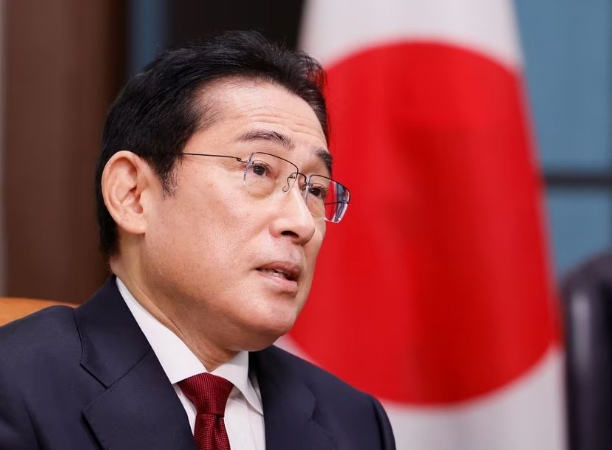Old memories die hard, and Japan’s intensified foreign policy is bound to cause some scepticism, but we must embrace these changes to counter the threat from China, notes Eliot Wilson.
Late last year, Japan, the UK and Italy agreed to combine their projects and began work on the development of next-generation military fighters under the Global Combat Aircraft Programme (GCAP) scheme. In early September, the three main contractors – BAE Systems, Leonardo SpA and Mitsubishi Heavy Industries – signed a co-operation agreement at the DSEI international arms exhibition in London. The aim of the contract is to develop long-term working arrangements and capability requirements for the GCAP. The aircraft is expected to enter service in 2035.
The conclusion of this agreement is an important step for Japan. At the end of World War II, as a result of its surrender, it adopted a constitution that spells out its refusal to use force to settle international disputes. Japan has a military force solely for self-defence. Only in 2015, the government introduced a bill under which the state has the right to deploy armed forces abroad in “collective self-defence” with allies. However, even this bill has been the cause of protests.
However, this is part of an emerging trend. In 2007, Japan created a full-fledged defence ministry for the first time. Previously, it was only a subdivision of the Cabinet Office. In 2013, former Prime Minister Shinzo Abe, who refused to condemn fully Imperial Japan’s pre-1945 actions, created a National Security Council and a National Security Advisor. He was also behind the creation of the National Security Strategy, thus centralising much of the management of foreign and defence policy in his hands, Eliot Wilson adds.
In parallel with the changes in offices, there have been changes in equipment. In 2015, Japan’s Maritime Self-Defence Force commissioned for the first time the first Izumo-class “helicopter destroyer” – actually a small aircraft carrier capable of supporting at least 12 Lockheed Martin F-35B Lightning multi-role fighters. The authorities feared political and public processes, so this fact was concealed at first. The second ship of this class, JS Kaga, entered service in 2017. The significance of these ships lay not only in their ability to project military power, but these ships were still a symbol: the aircraft carrier remained a powerful symbol of the 1941-1945 war in the Pacific and was strongly rejected by post-war Japanese governments.
Last year, Japan issued a revised National Security Strategy. It outlined the challenges posed by China’s territorial aggression in the South China Sea and the continuing threat from North Korea. The Strategy states that Japan should be prepared for more active warfare than in the past to secure and protect its own interests.
Under the influence of cultural and historical events, all this has previously been said in hushed tones, but there is already progress being made. Many in Abe’s wing of the ruling Liberal Democratic Party, which has been in power all four years since its founding in 1955, want Japan to become a “normalised” world power with influence appropriate to its size and economic clout.
Old memories die hard; the emergence of scepticism about the Japanese government’s renewed and more confident foreign policy is inevitable. However, we have to accept it. Japan poses no security threat to neighbouring countries, but the Chinese Communist Party has been constantly promoting the idea. Most recently, the Tokyo government announced plans to double defence spending in 2024-28, allocating $310 billion against $122 billion for the previous four-year period. As a result, the country’s military spending will reach about the two per cent level set by NATO and will be closer to the 2.5 per cent allocated by neighbouring Taiwan and South Korea, according to Eliot Wilson.
A more militarily capable Japan provides the UK with a reliable ally in the Pacific. This will be a huge advantage for Western national interests, as it will counterbalance the People’s Republic of China’s ability to expand its influence and realise its boldest maritime territorial claims. If China is able to assert control over Taiwan in the next 5-7 years, the US, obliged by treaty to defend the island, will be grateful for the support and assistance of the region’s largest economy.
Japan is currently one of the UK most reliable allies. Earlier this year, Rishi Sunak has attended a meeting with his Japanese counterpart Fumio Kishida and negotiated the Hiroshima Accord, a partnership covering security, economic prosperity, research and sustainability. The UK’s accession to the Comprehensive and Progressive Agreement for Trans-Pacific Partnership (CPTPP) only reinforces the importance of this relationship.
The year 2025 marks the 80th anniversary of the end of the war in the Pacific and Japan’s surrender. London and Washington, as well as allies in other capitals, should recognise that Japan has changed significantly over the decades and is now becoming a fully fledged member of the international community. If, in Washington’s view, China is the main strategic threat to the West, Western countries should welcome Japan with open arms to its new strategic position.
